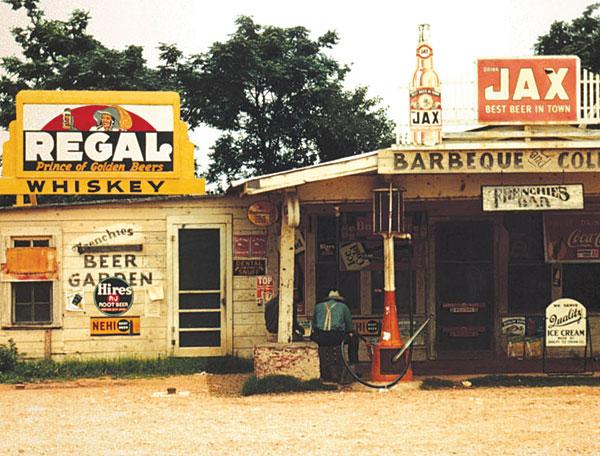| Columns Retired Columns & Blogs |
Book Review: The Chitlin' Circuit...

The Chitlin' Circuit and the Road to Rock 'n' Roll
by Preston Lauterbach
338 pages. New York: W.W. Norton, 2011. Hardcover, $26.95; paperback, $16.95.
by Preston Lauterbach
338 pages. New York: W.W. Norton, 2011. Hardcover, $26.95; paperback, $16.95.
In December 1941, just after Japan's attack on Pearl Harbor and the U.S.'s declaration of war, the state of Indiana unwittingly endorsed a very different conflict by approving the incorporation of a talent agency headed by Denver Ferguson, an Indianapolis-based African-American entrepreneur. The Chitlin' Circuit and the Road to Rock 'n' Roll documents the second of these campaigns, launched by the musical forces Ferguson dispatched to venues throughout the American South where blacks could entertain black audiences. In successive waves, talented musicians hit those stages running. Their performances were often incendiary, and a large chunk of this book chronicles the artistic warfare they waged between the advent of rhythm and blues and the emergence of what became known as rock'n'roll.
Preston Lauterbach's image-packed prose conveys vivid portraits of the African-American performers who worked this regional circuit, and of the previously unheralded entrepreneurs who brokered, bought, and promoted their acts. He's cooked up a mouthwatering account sure to satisfy anyone interested in rock history—a tangy alphabet soup of musicians that includes such headliners as Aaron "T-Bone" Walker and Johnny Ace, Roy Brown and James Brown, Clarence "Gatemouth" Brown and Cecil Gant, Sister Rosetta Tharpe and Big Mama Thornton, Big Joe Turner and Ike Turner.
The major offstage figures are Ferguson himself—a gambling racketeer, nightclub owner, and the circuit's central booking agent—and Don Robey, a Houston club owner and promoter whose mixed-race origins led him to boast, "I'm a white man and a black man. I'll outsmart you and kick your ass." Minor players behind the scenes include Robert Henry, who engaged talent for Memphis theaters during World War II. "Henry stood no taller than a pool cue," notes the keen-eyed Lauterbach. "He constantly leaned, a bent elbow on a bar top or a shoulder pressed against a pillar."
Along with his striking character descriptions, Lauterbach adeptly reconstructs the milieu inhabited by his mainly black cast—places like Indiana Avenue, an eight-block African-American stroll in Ferguson's Indianapolis, which locals described as running "from a pawnshop to a hospital." Lauterbach presents it in widescreen: "Many nights along the strip began with the hocking of a watch chain at one of the brokers in the 20 block, and ended in the municipal clinic at the far end. In between lived the barbecue stands, cafÇs, soda fountains, barbershops and beauty parlors, tailors, cleaners, shoeshines, cabstands, billiard rooms, taverns, and nightclubs with fast and furious floor shows."
The chitlin' circuit began to emerge in the 1930s, when touring dance bands, called "territory bands," were filling the entertainment gap that had opened in the South after the Great Depression shuttered vaudeville theaters catering to people of color. It seemed an opportune time for northern bandleaders to seek their fortunes in the region, and Chicago-based Walter Barnes took the gamble. His luck ran out one night in 1940, when he and 208 others died in a club fire in Natchez, Mississippi. Barnes was 34 years old.
For some black musicians, the South was an escape route that freed them from the mobsters who dominated northern nightclubs, and from restrictive musicians'-union rules. That's why the bandleader Jimmie Lunceford, a former high school football coach who ran a spit-and-polish outfit, worked the territory. Paradoxically, the syndicate helped Lunceford. It had used its muscle to make Seeburg juke boxes ubiquitous in the region, and a savvy advance man made sure Lunceford's records were loaded into them wherever he was scheduled to perform.
Gasoline rationing kept bands from traveling in buses during WWII, so Louis Jordan began touring with a smaller group. Jordan and his Tympany Five helped engender a new sound, and by the late 1940s their brassy jump-blues style had made the former big-band alto saxophonist a chitlin' circuit idol.

In 1948, two circuit performers scored with the same song. After composing "Good Rockin' Tonight," Roy Brown offered it to Wynonie Harris, who turned it down. Brown recorded it himself, and when it proved popular, Harris covered the tune. Some feel these two recordings constitute the birth of rock'n'roll and the song was subsequently recorded by various white performers, from Elvis Presley to Paul McCartney.
Lauterbach repeatedly zooms in on Little Richard Penniman, who as a boy "looked like the fused halves of incompletely formed twins—one eye bigger than the other, one leg and one arm each longer than their opposites." Whether performing or promoting, Richard's style was to shock and awe. "On the day of a show," Lauterbach relates, he "dressed for the stage and walked the low-down black parts of town. . . . [He'd] pick up the raggediest little urchin he could get his hands on, hug him, and autograph a twenty-dollar bill for the child. 'Go tell your momma Little Richard gave that to you,' he'd say." The tactic packed the house.
Some of the chitlin' circuit veterans Lauterbach spotlights triumphed to a degree no one could have imagined back in the day. Consider Richard, who for a time appeared in drag as Princess Lavonne, and whose original lyrics for "Tutti Frutti" celebrated gay sex. Though Richard revised "Tutti Frutti" for his 1955 single, he was sizzling when he recorded it, and it's his version—not the covers by Elvis or plain-vanilla Pat Boone—that I hear on my supermarket's sound system today.—David Lander
- Log in or register to post comments




































